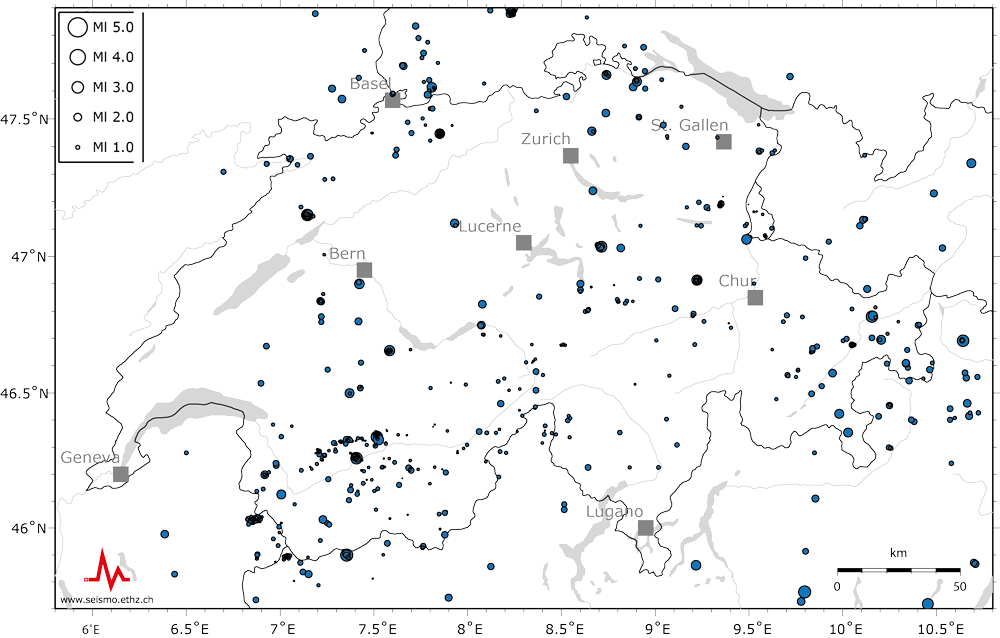2016-01-28
Swiss Earthquakes in 2015: A Look Back
After registering around 700 earthquakes — three of which were clearly felt — in Switzerland and neighboring countries, the Swiss Seismological Service (SED) at ETH Zurich looks back at a seismically quiet year. In 2015, the earth shook most frequently in the cantons of Valais and Graubünden, as well as in the area between the Walensee and Liechtenstein, Central Switzerland, and the Jura.
Read more...As in recent years, earthquake activity in 2015 was characterized by a number of earthquake swarms. These are a typical feature of earthquake activity in Switzerland. They are usually distinguished by the lack of a distinct main shock, with the strongest earthquake taking place in the middle or at the end of an earthquake sequence. Earthquake swarms can last a few hours to several years. Only in rare cases do the earthquakes increase in strength and number over time. The diffusion of gases or liquids in the earth’s crust is thought to be the cause.
In the last year, earthquake swarms occurred in the region of Biel / Bienne (BE) and Diemtigen (BE). There is a high probability that these earthquake swarms are linked to two earlier earthquake sequences in this area in2014. Two additional earthquake swarms took place between June and November in Valais: one approximately 5 kilometers northeast of Sion (VS) and the other about 6 kilometers north of Sierre (VS).
The magnitude of the earthquakes recorded in 2015 ranged between –0.1 and 3.3 on the Richter magnitude scale. The number of potentially felt earthquakes with a magnitude of 2.5 or greater was 20, which is close to the average of 23 per year over the past 40 years. The earthquake in the Biel / Bienne region (BE) of 31 January (magnitude 3.1), the earthquake near Bern of 6 April (magnitude 2.6), and the earthquake north of Sierre (VS) of 14 October (magnitude 3.1) were all clearly felt. However, none of these earthquakes was strong enough to cause damage.
As in previous years, earthquake activity in 2015 was concentrated principally in Valais and Graubünden. 2015 also saw more earthquakes in the area between the Walensee and Liechtenstein, Central Switzerland, and the Jura than in other locations in Switzerland. The observation of earthquake activity is an important basis for calculating seismic hazard. In 2015, the SED published an updated seismic hazard map of Switzerland. Along with the Valais and Graubünden, the regions of Basel, the St. Gallen Rhine Valley, and Central Switzerland stand out as particularly hazardous.
